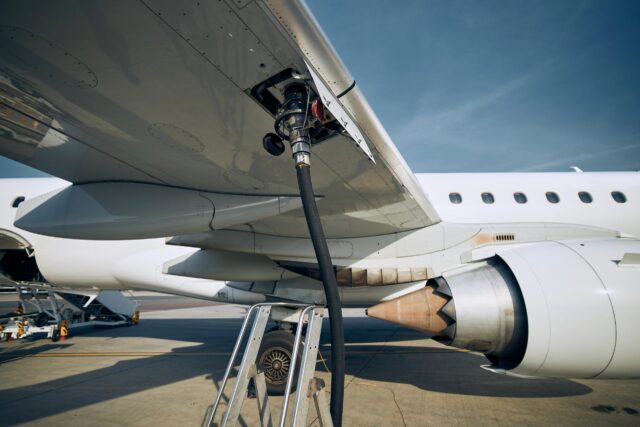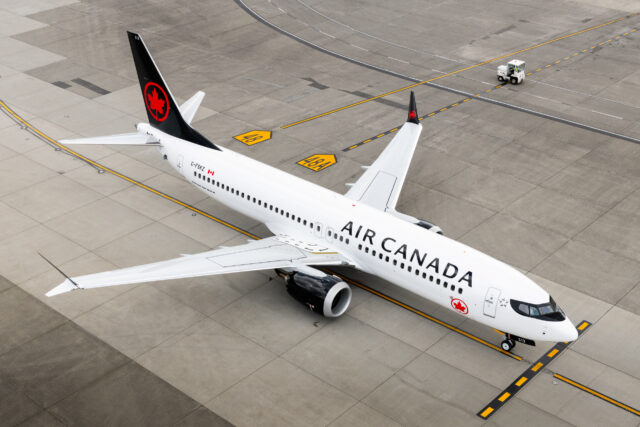Indian pilots urge inspection of Boeing 787 fleet after Air India RAT incident

India’s main pilots’ union has urged regulators to ground and inspect all Boeing 787 aircraft operating in the country after an Air India jet experienced an unusual technical incident involving its emergency power system.
The Federation of Indian Pilots (FIP), which represents more than 6,000 flight crew members nationwide, has written to the Directorate General of Civil Aviation (DGCA) requesting immediate electrical inspections across the 787 fleet.
The move follows an incident on Air India Flight 117, a Boeing 787-8 bound for Birmingham, which saw its ram air turbine (RAT) deploy in flight before landing safely on Saturday.
“I have never heard of the RAT being deployed automatically without any hydraulic loss, power loss or failures,” Charanvir Singh Randhawa, president of the Federation of Indian Pilots, told the New York Times.

The union believes an electrical issue could have triggered the turbine’s unexpected deployment.
The DGCA has yet to announce whether it will investigate the incident. Air India said “all electrical and hydraulic parameters” were normal.
The occurrence marks the second deployment of a ram air turbine on an Air India 787 in recent months.
A June 12 flight from Ahmedabad to London also saw the emergency system activate before the aircraft crashed shortly after take-off, killing all but one of those on board and 19 people on the ground.
What is a RAT?
The ram air turbine, or RAT, is a compact emergency power device fitted to many modern commercial aircraft, designed to provide an alternate source of hydraulic or electrical power in the event of a systems failure.
The mechanism operates by harnessing airflow – deploying into the airstream and using the aircraft’s forward motion to drive a small turbine, which in turn powers an electrical generator or hydraulic pump.
Normally, the RAT remains stowed within the fuselage or wing structure and is only deployed during serious power or hydraulic failures.
In such circumstances, it ensures that flight-critical functions – including flight controls, navigation, communications, and key instrumentation – remain operational until normal systems are restored.
Although rarely used, the RAT is a crucial safeguard, forming part of the redundant power architecture that allows modern aircraft to maintain control and safety during electrical or hydraulic emergencies.
Is the RAT significant to the Air India crash investigation?
Investigators have not yet publicly stated how the RAT deployment relates to the events that led to the crash of the 787 in Ahmedabad in June.
The Aircraft Accident Investigation Bureau (AAIB) has released its preliminary report which focuses on a movement of the fuel cutoff switches, as recorded by the aircraft’s flight data recorder, which shows they were moved from RUN to CUTOFF within seconds of the Boeing 787 lifting off from the runway.
Air India’s Boeing 787 Dreamliner lifted off from the runway at 08:08:39.
Three seconds later, at 08:08:42, both fuel switches are moved to the CUTOFF position, as recorded by the flight data recorder (FDR), leading to an immediate loss of thrust in both engines.
One pilot says to the other, “Why did you cut off?’. The other replies, “I didn’t do so.”

A few seconds later, at 08:08:48, fuel control switch 1, for the left engine, was moved back to the RUN position. At 08:08:52, control switch 2 also moved back to RUN.
A partial restart of one engine is detected, as it shows signs of ignition and increasing engine core speed, but thrust is not regained.
At 08:09:05, one of the flight crew transmits a distress call of ‘Mayday, Mayday, Mayday.’
One second later, at 08:09:06, the Ram Air Turbine (RAT) deploys automatically, indicating the loss of main electrical power.
The CVR stops recording at 08:09:11 as the aircraft is just a few hundred feet above ground. The exact time of impact is not noted.
What could be looked at in an investigation into the latest RAT incident?
The FIP’s email to the DGCA, the Aircraft Accident Investigation Bureau (AAIB), and the Ministry of Civil Aviation (MoCA), said the incident on Saturday saw the aircraft’s RAT automatically deploy at around 500 feet.
According to the FIP, data from the Aircraft Health Monitoring (AHM) system indicated a malfunction in the Bus Power Control Unit (BPCU), potentially leading to the turbine’s activation.
The Federation of Indian Pilots (FIP) observed that similar electrical irregularities involving Boeing 787s have been documented in India since the type’s introduction.

“We have strongly urged MoCA and AAIB to conduct a thorough examination of the electrical systems of all B-787 aircraft in the country,” the email said.
In light of the earlier Air India crash, the FIP said: “In the interest of air safety, DGCA must carry out a detailed investigation of the B-787 electrical systems.”
The DGCA was quoted by news agency ANI as saying: “Boeing recommended maintenance actions for un-commanded RAT deployment have been carried out and no discrepancy has been observed. Aircraft is being released for service.”
















